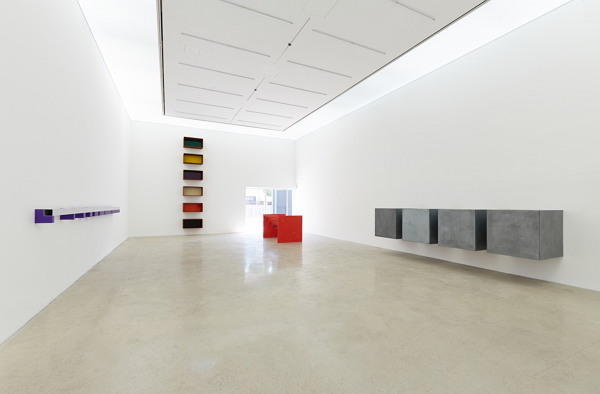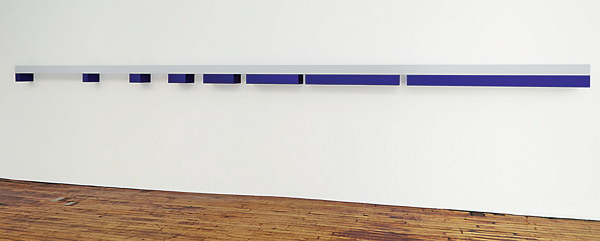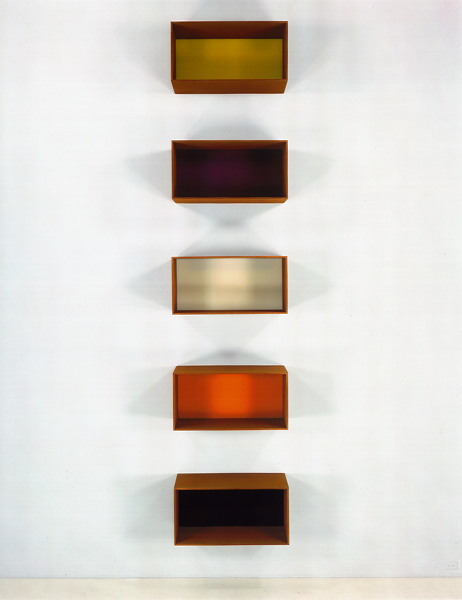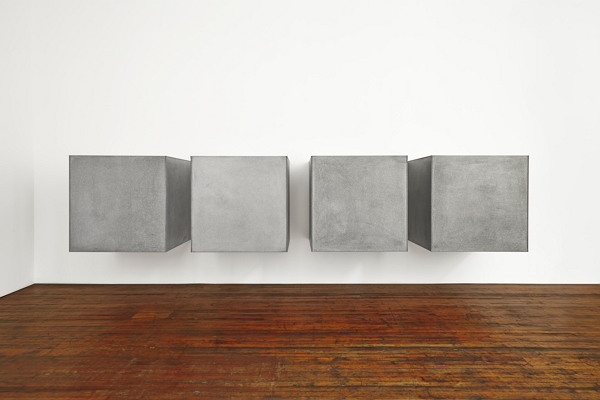Simplicity and space explored in Judd exhibit
Abstract ‘boxes’ and ‘stacks’ of the artist on display in the first exhibition at Kukje Gallery
By Lee Woo-youngPublished : Nov. 3, 2014 - 20:21
Simple, abstract sculptural objects by American artist Donald Judd are on display in Seoul, shedding light on one of the most significant artists of the postwar period.
Though widely associated with minimalism, Judd (1928-1994) objected to this term, saying that it was a generalization and misinterpretation of his philosophy. He created his own term, “specific object,” for his thought that every component of an object including materials, form and colors can be used to explore space. It’s also the title of his 1965 paper that details his art theories.
“Don’s works were not minimalist, but maximalist. If you look at the art with the furniture, buildings and installations, you will realize it’s about creating an entire space,” said Flavin Judd, the artist’s son and co-president of the Judd Foundation, at the press preview last Thursday at Kukje Gallery. Judd and his sister are copresidents of the foundation formed to preserve his father’s works.
Though widely associated with minimalism, Judd (1928-1994) objected to this term, saying that it was a generalization and misinterpretation of his philosophy. He created his own term, “specific object,” for his thought that every component of an object including materials, form and colors can be used to explore space. It’s also the title of his 1965 paper that details his art theories.
“Don’s works were not minimalist, but maximalist. If you look at the art with the furniture, buildings and installations, you will realize it’s about creating an entire space,” said Flavin Judd, the artist’s son and co-president of the Judd Foundation, at the press preview last Thursday at Kukje Gallery. Judd and his sister are copresidents of the foundation formed to preserve his father’s works.


The wood sculptural piece painted in red is one of Judd’s earlier works that shows his view of space through objects.
“This one opens up and defines the space without being in the center of the space. Other pieces have one focal point and this one doesn’t have one. It’s just spread out,” explained Flavin Judd.
As his works were closely related to the surrounding space, he preserved his artworks where they were created, the way they are. The red wooden piece has been kept in the studio in Marfa, Texas, where Judd lived, according to his instructions.


Judd used industrial materials such as plywood, steel, concrete, Plexiglas and aluminum because of their structural characteristics and surface qualities. He created refined works with the help of manufacturers and technicians of each material and processing, which reminds us of the practice of contemporary American artist Jeff Koons.
The 1970 untitled work “progression” is made in clear and purple anodized aluminum that spans nearly 650 centimeters. The “stack” of multicolored square boxes, which weigh 150 kilograms each, show sophistication in the meticulous combination of Cor-ten steel and Plexiglas.
“The excellence of the material processing and painting stands out in Judd’s works. The industry made a great contribution to his works having such a profound impact on space,” said Yoo Jin-sang, art critic and professor of Kaywon School of Art and Design.
The exhibition continues through Nov. 30 at Kukje Gallery in Samcheong-ro, Seoul. For more information, call (02) 735-8449.
By Lee Woo-young (wylee@heraldcorp.com)









![[Today’s K-pop] BTS pop-up event to come to Seoul](http://res.heraldm.com/phpwas/restmb_idxmake.php?idx=644&simg=/content/image/2024/04/17/20240417050734_0.jpg&u=)

![[Graphic News] More Koreans say they plan long-distance trips this year](http://res.heraldm.com/phpwas/restmb_idxmake.php?idx=644&simg=/content/image/2024/04/17/20240417050828_0.gif&u=)





![[KH Explains] Hyundai's full hybrid edge to pay off amid slow transition to pure EVs](http://res.heraldm.com/phpwas/restmb_idxmake.php?idx=652&simg=/content/image/2024/04/18/20240418050645_0.jpg&u=20240419100350)

